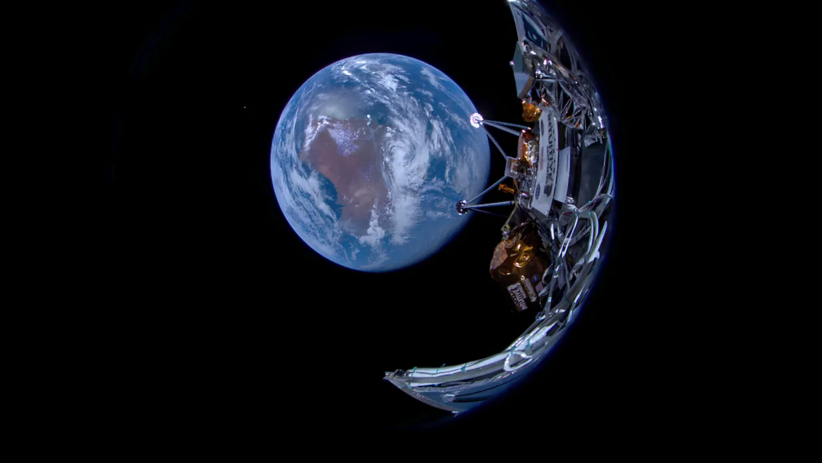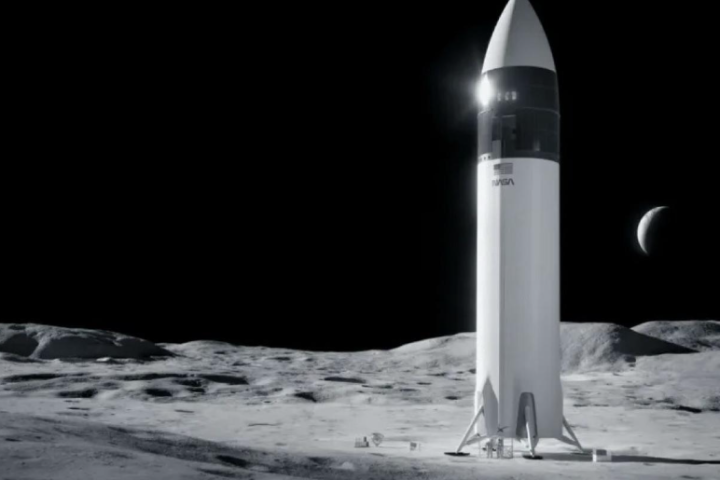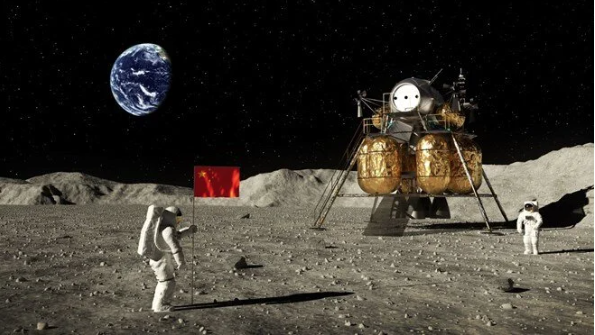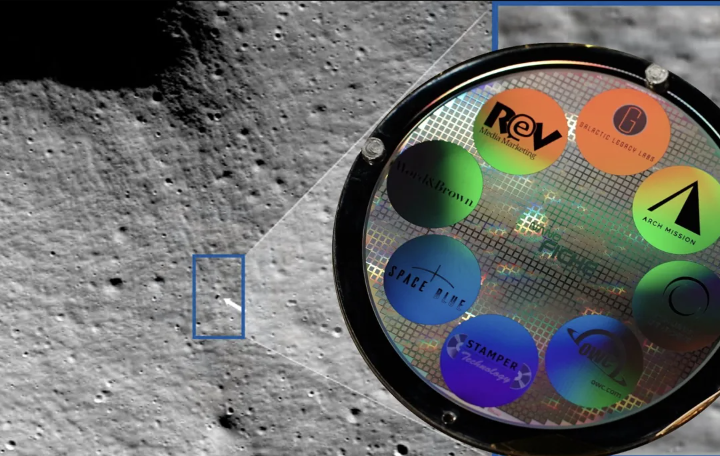Odysseus, a spacecraft built by Houston-based Intuitive Machines, has successfully landed on the Moon.
After about 13 tense minutes in which ground controllers were unsure of the spacecraft’s health, company officials announced that the vehicle had successfully landed and established communication with Earth.
“Odysseus has a new home” https://t.co/oVgLobxH8T
— Intuitive Machines (@Int_Machines) February 22, 2024
But despite reaching the surface and communicating with the ground, the status of the lander was unknown.
“After troubleshooting communications issues, flight controllers have confirmed that Odysseus is upright and beginning to send data,” Intuitive Machines said in a recent statement. We are currently working to download the first images from the lunar surface.”
Odysseus was the first US spacecraft to land on the Moon since Apollo 17 in 1972, more than 50 years later. It also made history as ‘the first spacecraft sent to the Moon by a private company’.
Here’s everything you need to know about the IM-1 mission
NASA broadcast the landing live, you can watch the broadcast via the video above.
1. Where did the spacecraft land?
Odysseus landed at a point on the plain outside the Malapert A crater (named after the 17th-century Belgian astronomer Charles Malapert) in the south polar region.
Some of the craters in this region are permanently in shadow and are of particular interest because ice has been detected in them. Previous US lunar missions have landed in equatorial regions.
What happened during the 2nd IM-1 mission?
On February 15th, a SpaceX Falcon 9 rocket sent Odysseus on course for the Moon. After separation, the spacecraft successfully continued on its path. The first engine ignition to test the propulsion system was delayed because the fuel took longer to cool down than tests on the ground had anticipated.
Intuitive Machines successfully transmitted its first IM-1 mission images to Earth on February 16, 2024. The images were captured shortly after separation from @SpaceX's second stage on Intuitive Machines’ first journey to the Moon under @NASA's CLPS initiative. pic.twitter.com/9LccL6q5tF
— Intuitive Machines (@Int_Machines) February 17, 2024
Engineers set up the launch procedures and the launch was successfully carried out on February 16. Along the way, the spacecraft transmitted photos of both the Earth and the Moon.
Flight controllers analyzed the post-Lunar Orbit Insertion engine burn data and updated the anticipated flight maneuver timing, including an expected 1630 CST landing opportunity on Thursday. The landing opportunity will be Odysseus’ hardest challenge yet. The lander continues to… pic.twitter.com/T6ULovaOPf
— Intuitive Machines (@Int_Machines) February 21, 2024
Flight controllers fired the engine twice more, on February 18 and February 20, to fine-tune the spacecraft’s course to the Moon. The second time was enough, so flight controllers decided to skip the planned third correction.
A little later, the company said in a statement that the six-legged lander had entered a circular orbit 92 km above the lunar surface. Thus, the countdown began.
It was expected that there would be a short communication blackout during the landing. But the expected landing hour passed in silence and tension. After about 13 minutes of uncertainty, Tim Crain, chief technology officer of Houston-based Intuitive Machines, the company that built Odysseus, reported that the signal from the spacecraft had been detected, albeit weakly, and said, “Yes, the signal is weak, but it’s there.” Shortly afterward, he said, “We can absolutely confirm that our rover is on the surface of the Moon. Congratulations.”
“Intuitive Machines’ uncrewed vehicle landed on the Moon (at 2:23 a.m. PT), bringing NASA science to the lunar surface. These vehicles will prepare us for the Artemis manned exploration missions.”
3. How did Odysseus land?
The spacecraft fired its engine so that the circular orbit changed to an elliptical orbit and descended to within about 10 km of the lunar surface.
From this point on, Odysseus was completely on his own during the descent. After traveling for about an hour, his engine restarted and he began his descent. Of course, he had to reduce his initial speed (about 6,550 kilometers per hour).
Odysseus used cameras to determine his position, matched the shapes of the craters to recorded maps and measured his own altitude by bouncing laser beams off the surface.
Odysseus’ Terrain Relative Navigation camera captured this image of the Bel’kovich K crater in the Moon’s northern equatorial highlands.
It is an approximate 50 km diameter crater with mountains in the center, made when the crater was formed.
(21FEB2024 1750 CST) pic.twitter.com/0egu0NOrKP— Intuitive Machines (@Int_Machines) February 21, 2024
When it was within 2 km of the targeted landing site, it switched to a steep heading and sensors searched for a safe spot. For the last 50 meters of the descent, Odysseus relied solely on its instruments, which acted as the spacecraft’s inner ear, measuring acceleration forces. He had to stop using the camera and altitude-measuring laser to avoid the misleading effect of dust from the engine exhaust.
4. And what will the spacecraft do on the Moon?
The spacecraft Odysseus is powered by solar panels. Its mission will last only seven days, until the sun sets over the landing site. That’s when a cold lunar night will begin, lasting two weeks. Unfortunately, Odysseus was not designed to survive in these conditions.
The six NASA vehicles and missions carried to the Moon by Odysseus:
- A laser retroreflector array that reflects back laser beams.
- A LIDAR instrument that precisely measures the altitude and speed of the spacecraft as it descends to the lunar surface.
- A stereo camera to capture video of the dust cloud produced by Odysseus’ engines during landing.
- A low-frequency radio receiver that measures the effects of charged particles on radio signals near the lunar surface, providing
- information that could help design future radio observations on the Moon.
- A warning system to demonstrate an autonomous navigation system called Lunar Node-1,
- A device that uses radio waves to measure fuel levels in the propellant tank.
The lander also carries other payloads, including a camera built by Embry-Riddle Aeronautical University students; a pionee instrument for a future lunar telescope; and an art project by Jeff Koons.
5. How big is the spacecraft?
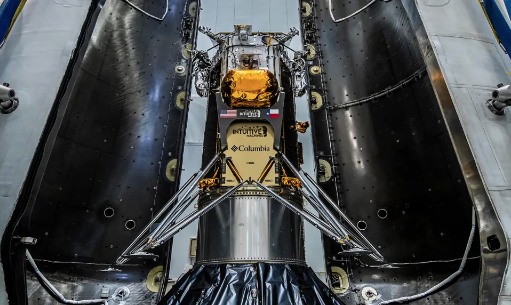
Intuitive Machines’ lander is a hexagonal cylinder with six landing legs, about 4.5 meters tall and 152 cm wide. The lander weighed about 1,900 kg at launch (with a full tank of fuel).
Note for fans of the famous TV series Dr. Who: The lander’s body is roughly the size of the Tardis, a time-traveling fictional spacecraft.
6. Why isn’t NASA running this mission?
Although the IM-1 mission is a private mission, the agency in charge is NASA, which paid $118 million to send six vehicles to the Moon.
The IM-1 mission is part of NASA’s Commercial Lunar Payload Services (CLPS) program. This program allows private companies to send test vehicles to the Moon and, of course, saves NASA from building landers at the same time.
As we have already mentioned, these missions will take cargo to the Moon, conduct experiments and test new technologies. All for manned lunar missions planned for 2026 and beyond.
The space agency thinks this approach will be much cheaper; it also aims to gain more experience before the crewed lunar missions that are part of the Artemis program.
New York Times and Washington Post news Intuitive Machines web

